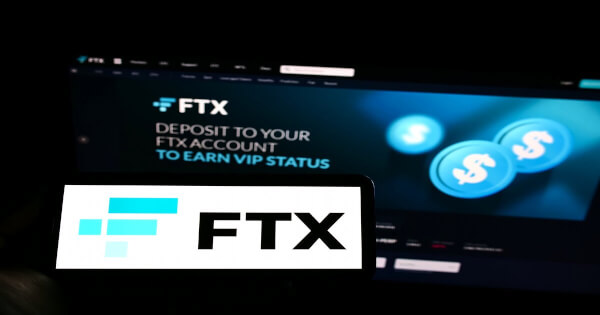The Terraform VMware Cloud Director Provider v3.11.0 now supports installing and managing Container Service Extension (CSE) 4.1, with a new set of improvements, the new vcd_rde_behavior_invocation data source, and updated guides for VMware CloudDirector users to deploy the required components. In this blog post, we will be installing CSE 4.1 in an existing VCD and creating and managing a TKGm cluster.
Preparing the installation
First of all, we must make sure that all the prerequisites listed in the Terraform VCD Provider documentation are met. CSE 4.1 requires at least VCD 10.4.2, we can check our VCD version in the popup that shows up by clicking the About option inside the help “(?)” button next to our username in the top right corner:
Check that you also have ALB controllers available to be consumed from VMware Cloud Director, as the created clusters require them for load-balancing purposes.
Step 1: Installing the prerequisites
The first step of the installation mimics the UI wizard step in which prerequisites are created:
We will do this exact step programmatically with Terraform. To do that, let’s clone the terraform-provider-vcd repository so we can download the required schemas, entities, and examples:
“`html
git clone https://github.com/vmware/terraform-provider-vcd.git
cd terraform-provider-vcd
git checkout v3.11.0
cd examples/container-service-extension/v4.1/install/step1
“`
If we open 3.11-cse-install-2-cse-server-prerequisites.tf we can see that these configuration files create all the RDE framework components that CSE uses to work, consuming the schemas that are hosted in the GitHub repository, plus all the rights and roles that are needed. We won’t customize anything inside these files, as they create the same items as the UI wizard step shown in the above screenshot, which doesn’t allow customization either.
Now we open 3.11-cse-install-3-cse-server-settings.tf, this one is equivalent to the following UI wizard step:
We can observe that the UI wizard allows us to set some configuration parameters, and if we look to terraform.tfvars.example we will observe that the requested configuration values match. Before applying all the Terraform configuration files that are available in this folder, we will rename terraform.tfvars.example to terraform.tfvars, and we will set the variables with correct values. The defaults that we can see in variables.tf and terraform.tfvars.example match with those of the UI wizard, which should be good for CSE 4.1. In our case, our VMware Cloud Director has complete Internet access, so we are not setting any custom Docker registry or certificate here. We should also take into account that the terraform.tfvars.example is asking for a username and password to create a user that will be used to provision API tokens for the CSE Server to run. We also leave these as they are, as we like the “cse_admin” username.
Once we review the configuration, we can safely complete this step by running:
“`html
terraform init
terraform apply
“`
The plan should display all the elements that are going to be created. We complete the operation (by writing yes to the prompt) so the first step of the installation is finished. This can be easily checked in the UI as now the wizard doesn’t ask us to complete this step, instead, it shows the CSE Server configuration we just applied:
Step 2: Configuring VMware Cloud Director and running the CSE Server
We move to the next step, which is located at examples/container-service-extension/v4.1/install/step2 of our cloned repository.
“`html
cd examples/container-service-extension/v4.1/install/step2
“`
This step is the most customizable one, as it depends on our specific needs. Ideally, as the CSE documentation implies, there should be two Organizations: Solutions Organization and Tenant Organization, with Internet access so all the required Docker images and packages can be downloaded (or with access to an internal Docker registry if we had chosen a custom registry in the previous step). We can investigate the different files available and change everything that doesn’t fit with our needs. For example, if we already had the Organization VDCs created, we could change from using resources to using data sources instead. In our case, the VMware Cloud Director appliance where we are installing CSE 4.1 is empty, so we need to create everything from scratch. This is what the files in this folder do, they create a basic and minimal set of components to make CSE 4.1 work. Same as before, we rename terraform.tfvars.example to terraform.tfvars and inspect the file contents so we can set the correct configuration. As we mentioned, setting up the variables of this step depends on our needs and how we want to set up the networking, the NSX ALB, and which TKGm OVAs we want to provide to our tenants. We should also be aware that some constraints need to be met, like the VM Sizing Policies that are required for CSE to work being published to the VDCs, so let’s read and understand the installation guide for that purpose. Once we review the configuration, we can complete this step by running:
“`html
terraform init
terraform apply
“`
Now we should review that the plan is correct and matches to what we want to achieve. It should create the two required Organizations, our VDCs, and most importantly, the networking configuration should allow Internet traffic to retrieve the required packages for the TKGm clusters to be provisioned without issues (remember that in the previous step, we didn’t set any internal registry nor certificates). We complete the operation (by writing yes to the prompt) so the second step of the installation is finished. We can also double-check that everything is correct in the UI, or do a connectivity test by deploying a VM and using the console to ping an outside-world website.
Cluster creation with Terraform
Given that we have finished the installation process and we still have the cloned repository from the previous steps, we move to examples/container-service-extension/v4.1/cluster.
“`html
cd examples/container-service-extension/v4.1/cluster
“`
The cluster is created by the configuration file 3.11-cluster-creation.tf, by also using the RDE framework. We encourage the readers to check both the vcd_rde documentation and the cluster management guide before proceeding, as it’s important to know how this resource works in Terraform, and most importantly, how CSE 4.1 uses it. We will open 3.11-cluster-creation.tf and inspect it, to immediately see that it uses the JSON template located at examples/container-service-extension/v4.1/entities/tkgmcluster.json.template. This is the payload that the CSE 4.1 RDE requires to initialize a TKGm cluster. We can customize this JSON to our needs, for example, we will remove the defaultStorageClassOptions block from it as we won’t use storage in our clusters. The initial JSON template tkgmcluster.json.template looks like this now:
“`html
{“apiVersion”: “capvcd.vmware.com/v1.1”,“kind”: “CAPVCDCluster”,“name”: “${name}”,“metadata”: {“name”: “${name}”,“orgName”: “${org}”,“site”: “${vcd_url}”,“virtualDataCenterName”: “${vdc}”},“spec”: {“vcdKe”: {“isVCDKECluster”: true,“markForDelete”: ${delete},“forceDelete”: ${force_delete},“autoRepairOnErrors”: ${auto_repair_on_errors},“secure”: {“apiToken”: “${api_token}”}},“capiYaml”: ${capi_yaml}}}
“`
There’s nothing else that we can customize there, so we leave it like that. The next thing that we notice is that we need a valid CAPVCD YAML, we can download it from here. We’ll deploy a v1.25.7 Tanzu cluster, so we download this one to start preparing it. We open it with our editor and add the required snippets as stated in the documentation. We start with the kind: Cluster blocks that are required by the C
Source link






















